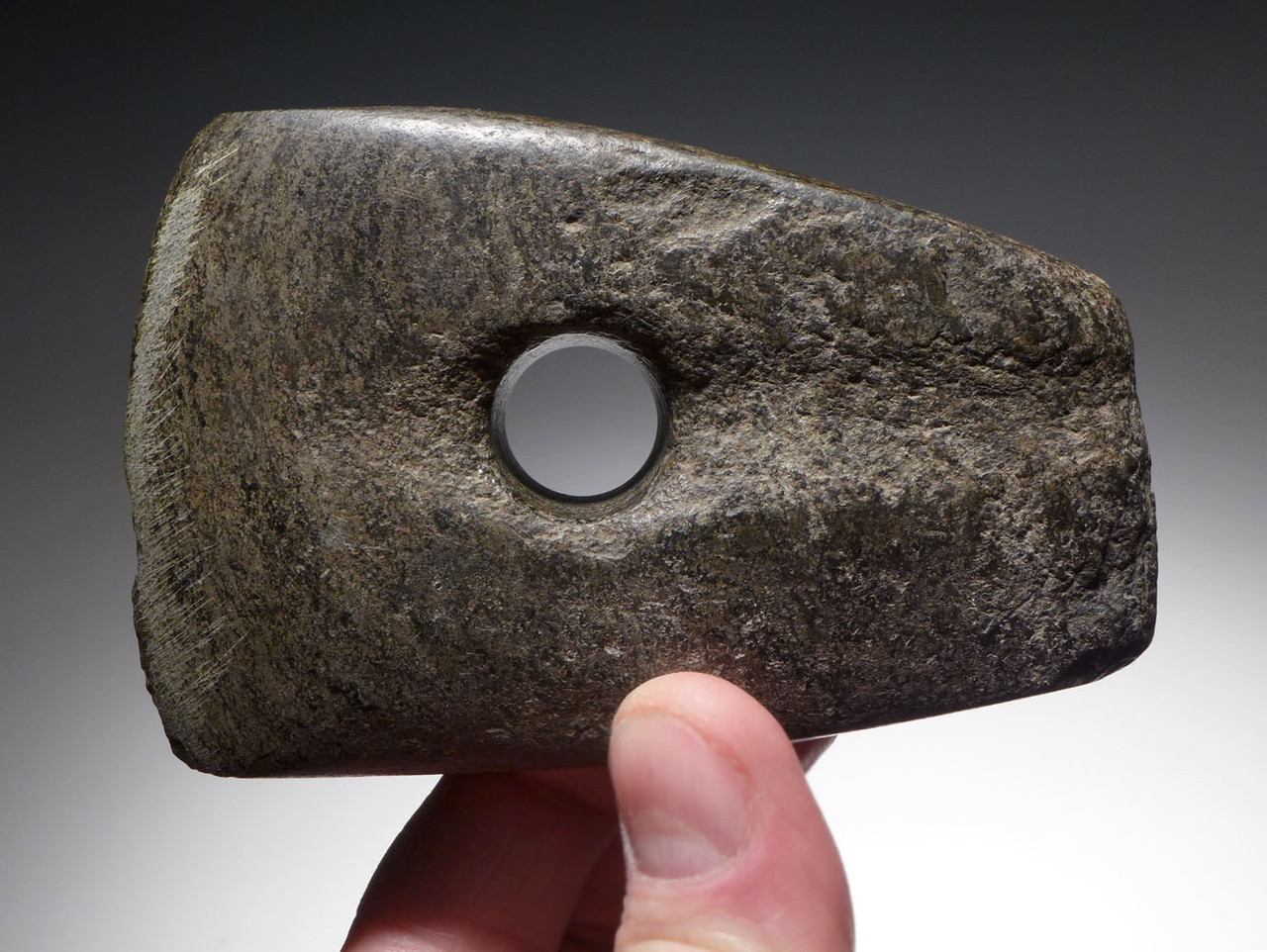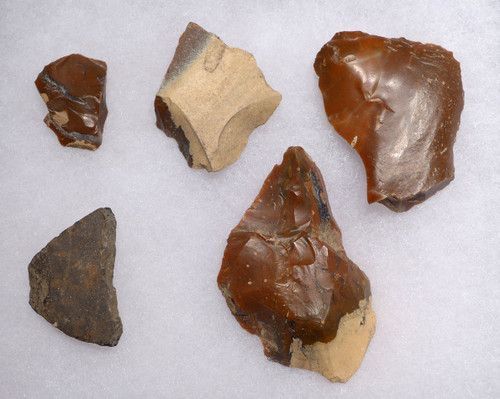Product Description
SEE MORE EUROPEAN NEOLITHIC TOOLS
This extremely rare stone perforated flat adze axe is from the Linear Pottery Culture of Central Europe. These tools were fashioned by Europeans of the first farming and stock-herding societies in Central Europe. This scarce axe was skillfully made of Amphibolite stone and expertly polished. A drilled hole pierces the flat side of the axe, and a groove runs down the length of the other flat side. This groove was likely used to drive a wedge into the axe to firmly affix it to a wooden handle. The broad cutting edge has extensive use wear that is plainly evident. Adze axes like these were THE primary tools used in large wood-working projects such as the construction of the iconic long house structures that were famous in this era. In times of conflict, these axes also served as deadly effective weapons.
The vast majority of polished stone axes of the Neolithic Linear Pottery Culture were of the non-perforated type making this drilled example CONSIDERABLY MORE RARE. Towards the end of the Linear Pottery Culture, the first perforated tools began appearing around 5000 BC. Enhancing its rarity is the fact that this axe survived complete and unbroken. Most of the time, only fragments of these axes are found because the nature of the perforation made them much more fragile when used.
Formerly in the private collection of a now deceased German gentleman who's collection dated back to the early 1900's, his original collection label writing is still intact and visible on one side of the axe. Despite our heavy presence in Europe and making European collection acquisitions, this is ONLY Linear Pottery Culture perforated stone axe we have ever had the opportunity of acquiring in the last 24 years! An excellent chance to add a RARE museum-class artifact to your collection from some of the world's first farming peoples in Europe!
HISTORY
The earliest food-producing communities to appear on the North European Plain were those of the Linear Pottery Culture, which had also colonized the loess belt across central Europe between 5400 and 5000 B.C.. This cultural horizon spread rapidly over large parts of Central and Western Europe during the middle of the sixth millennium B.C., taking with it some of the raw materials from its region of origin in Hungary. There are vast areas in which Linear Pottery settlements have not yet been found.
Permanent settlement is an important feature of these early agriculturalist societies, often providing clear evidence of plant and animal domestication. These peoples built massive timber longhouses for shelter demonstrating the technological advances made during the early Neolithic. Artifacts are often found in or around these dwellings, notably figurines, decorated pottery, carved bone and stone tools.
The ceramics, flint tools, and ground stone tools found on the Linear Pottery sites of the North European Plain are essentially similar to those found elsewhere in east-central Europe. Unlike the large Linear Pottery sites of the loess belt, substantial longhouses have not been found in the lowlands. Instead, most of the lowland Linear Pottery sites are relatively small collections of shallow pits. The pits often have dense concentrations of refuse with relatively large shards, and many reconstructable vessels. All the same, they do not appear to represent the same level of commitment to particular settlement locations as do the longhouse settlements of the loess belt.
 US DOLLAR
US DOLLAR
 EURO
EURO
 AUSTRALIAN DOLLAR
AUSTRALIAN DOLLAR
 CANADIAN DOLLAR
CANADIAN DOLLAR
 POUND STERLING
POUND STERLING


























